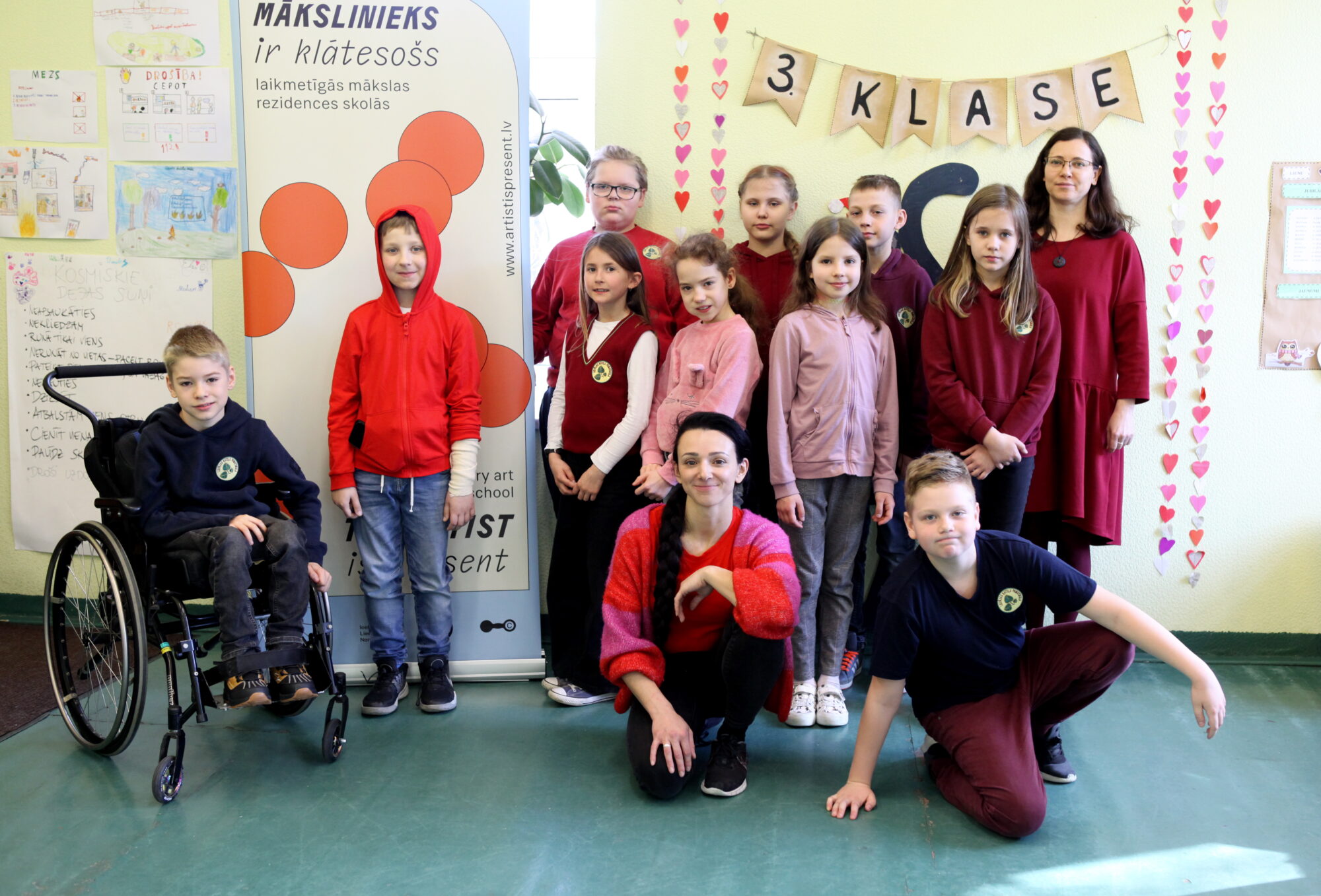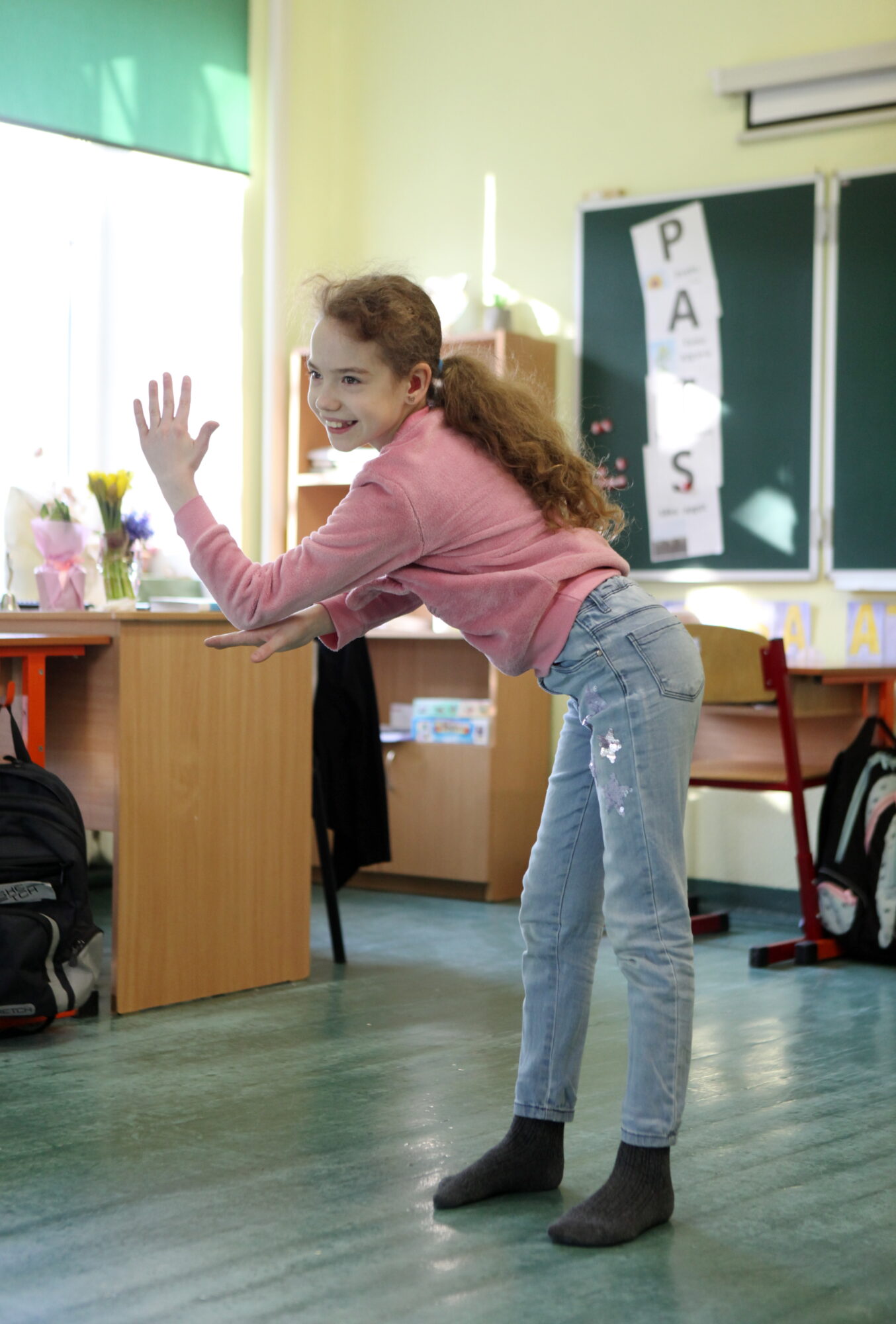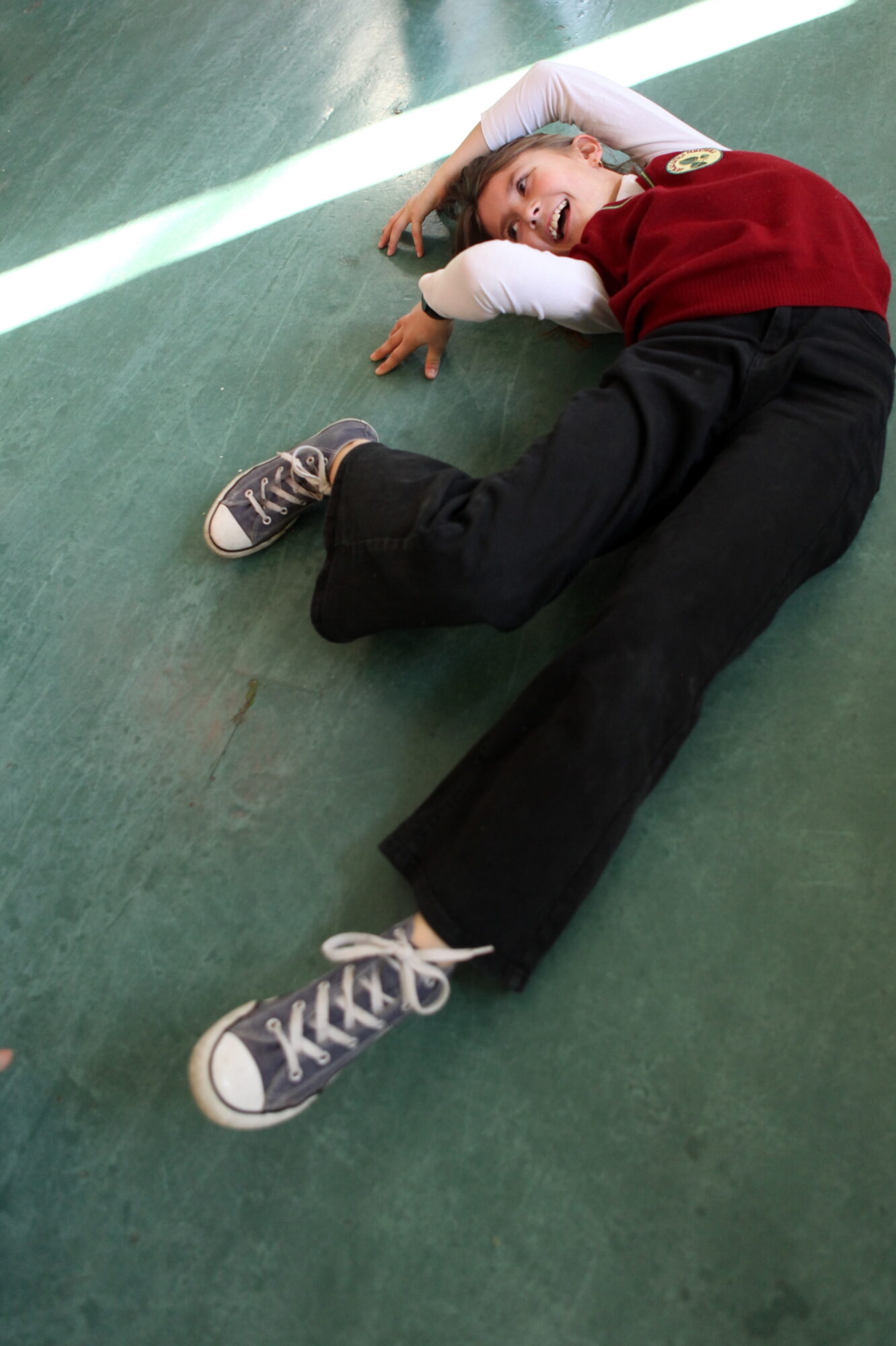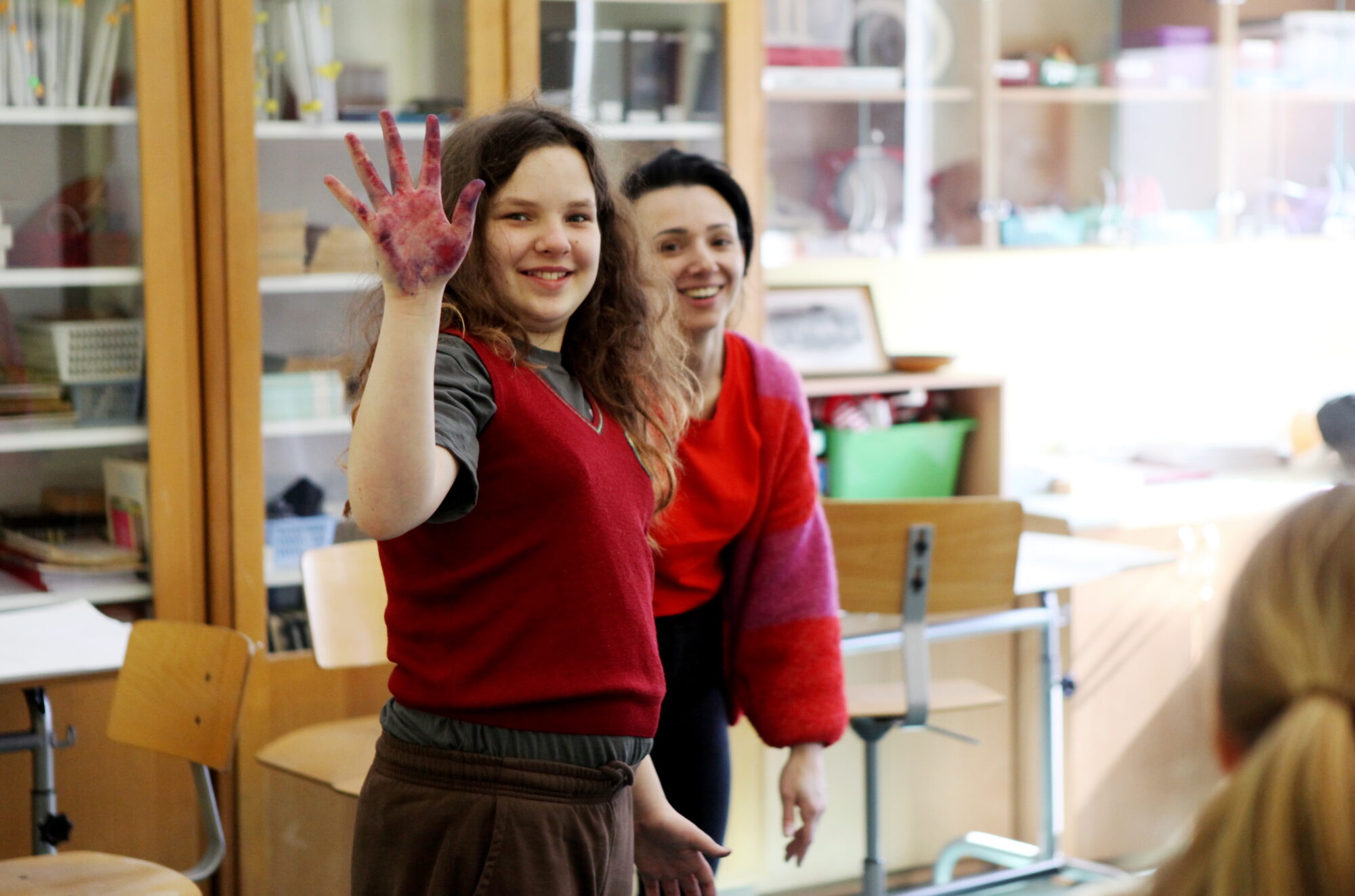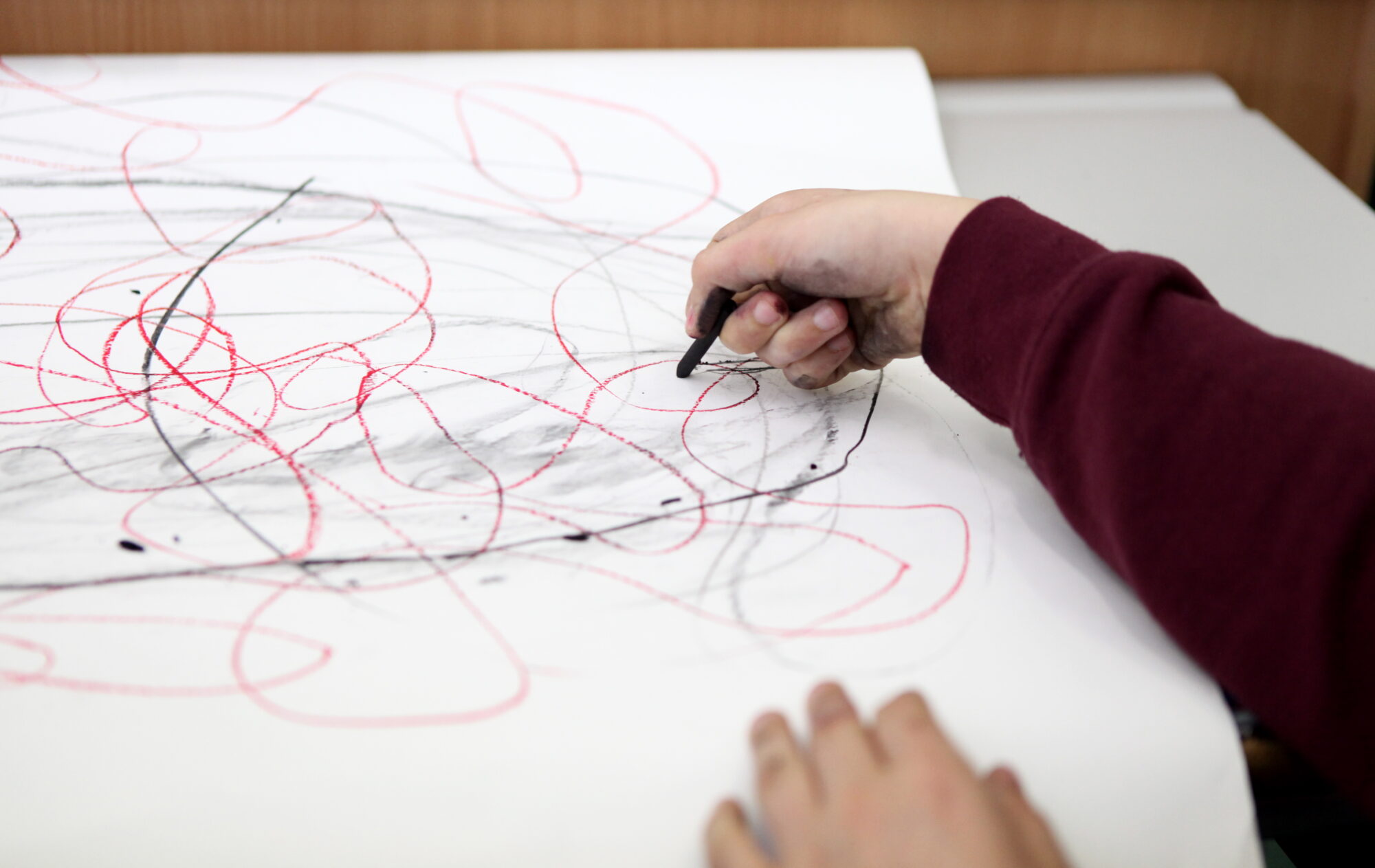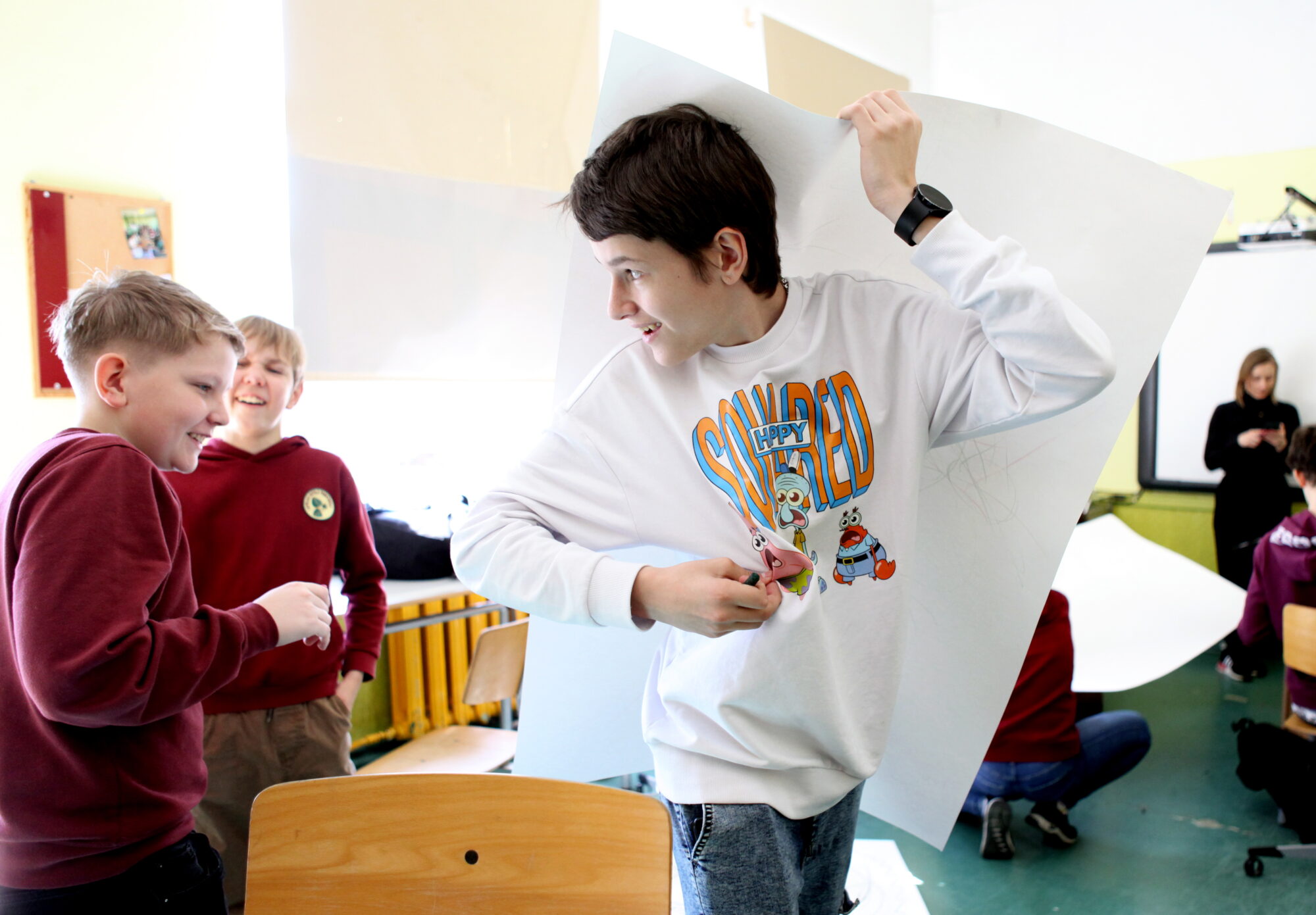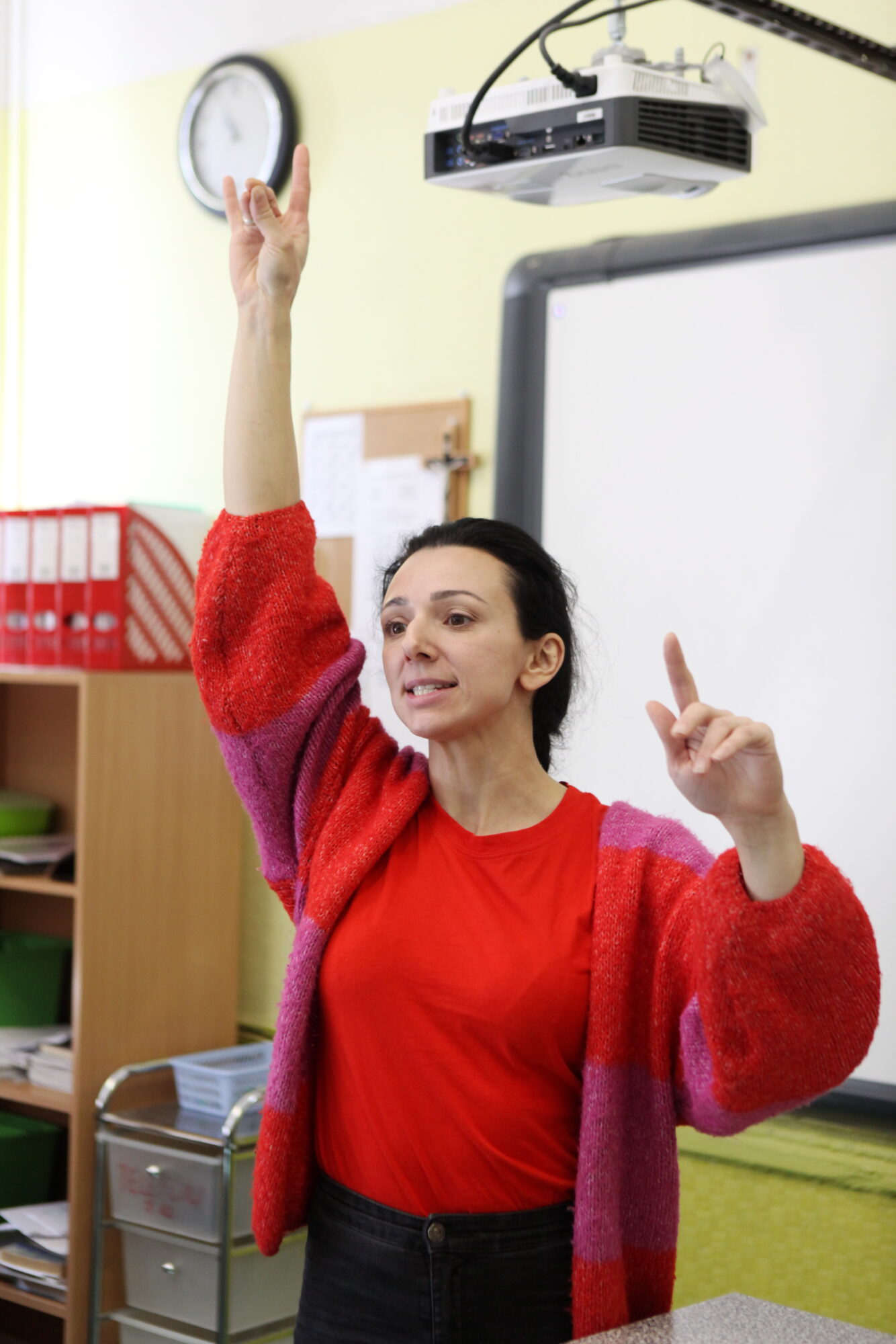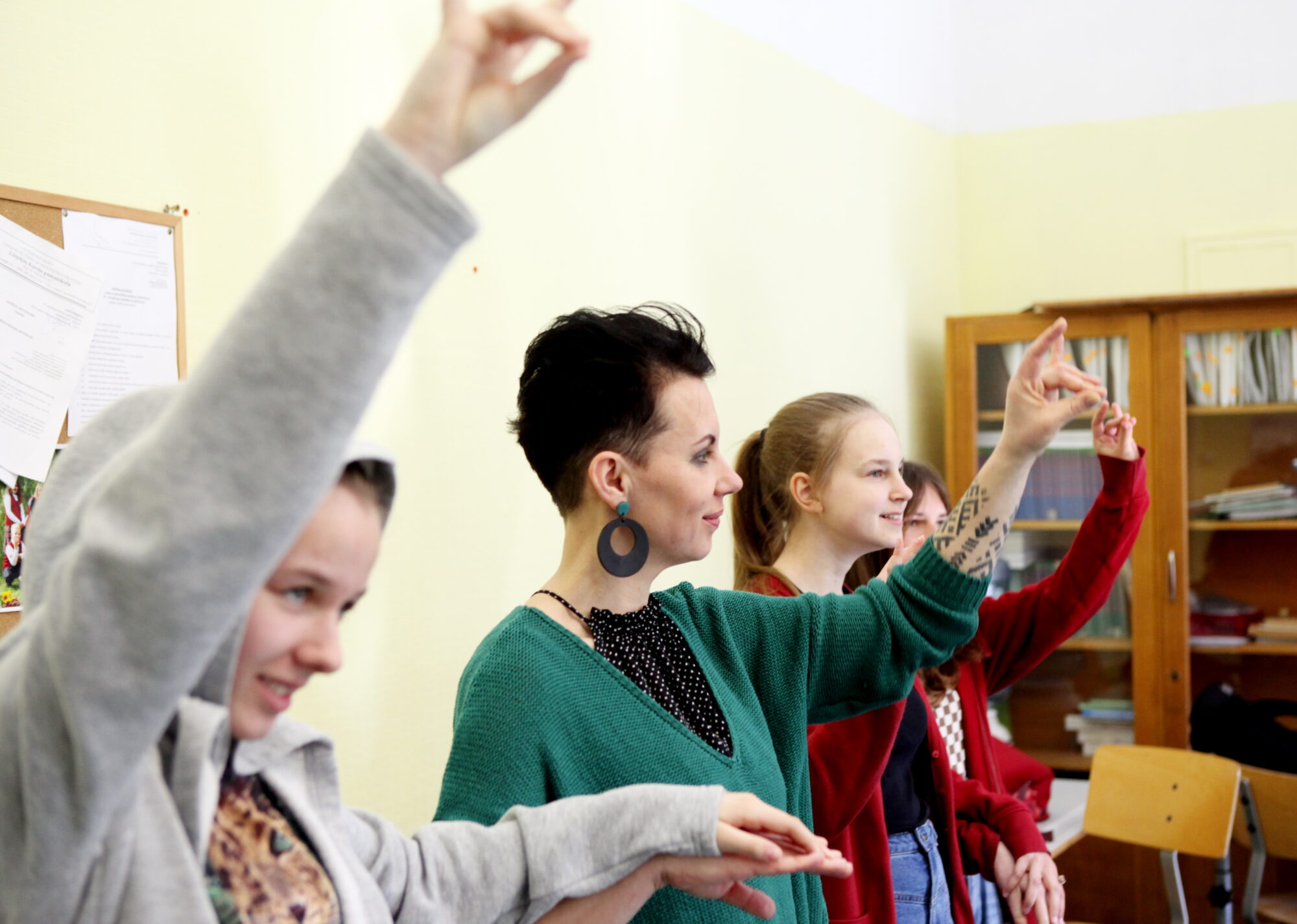May 8, 2023
Kristīne Brīniņa’s workshops with 3rd and 7th grade pupils of Liepāja Catholic Primary School

The body’s voice like an unshakable mountain. Class 3.
Within the project “The Artist is Present – Contemporary Art Residencies in Schools”, artist Kristīne Brīniņa visited the third class of Liepāja Catholic Primary School on 11 April for the fourth time with a creative lesson to encourage children to be aware of their bodies and discover themselves and the world around them in a different way through movement! The lesson was also attended by project leader Māra Žeikare, and the process was captured by photographer Lita Millere. The class was supported by teacher Liene Mileiko.
At the beginning of the session, the children shared their joys, experiences and impressions since the last meeting. The sharing was followed by a warm-up game and an imaginative exercise where everyone had the opportunity to play the role of a “stamp”, using their body to make impressions on the surfaces and objects around them. At a previous meeting, students were asked to choreograph their name, which they each had the opportunity to demonstrate. After the presentation of the homework, the class joined together in a movement improvisation exercise, during which the children interacted with each other to embody the terrain of a mountain. At the suggestion of one pupil, who said “I want to draw!”, the artist encouraged them to transfer the movement exercises to the page by drawing. At the end of the session, the children were invited to express themselves and share what they liked about it or, conversely, what they would like to do differently. The children said that the most memorable part of the activity was when they all built the mountain together, putting their different body “stamps” together, and felt united. When asked what it is that children do in these activities, we received a wide variety of answers – children appreciate the freedom of movement that is allowed in the classroom environment – they are even allowed to lie on the ground! The children learn to rediscover their bodies, to free them, and to express themselves without words. Expressing words in movement. To discover that movement can be both dance and another form of expression. The children recognised that movement could be part of every lesson, not just sports lessons. The choreographic techniques used by Kristine also help children with physical and hearing impairments to fit into the classroom environment. Robert’s mother is also a classroom assistant, and after the class she said that the non-verbal communication used to promote children’s self-expression really brings the class together and is particularly inclusive for children with physical disabilities. The insights she gained serve as an inspiration for her when planning future meetings.
Ourselves. 7th grade.
On 11 April, as part of the project “The Artist is Present – Contemporary Art Residencies in Schools”, artist Kristīne Brīniņa visited the seventh grade students of Liepāja Catholic Primary School.
The lesson with the seventh grade began with the artist reflecting on the inspiring meeting the previous time, recalling the successful movement composition work that made her think about the power of the group. This was followed by a trust exercise in which the young people, divided into pairs, guided each other in the room. Then, by playing the role of a “stamp”, everyone was invited to pay attention to touch – which also leaves an imprint on the surface. The artist and the children went outside in the schoolyard to choreograph their words as graffiti on the surrounding surfaces – walls, trees, fences, etc. Back in the classroom, drawing with crayons, the pupils were invited to feel and observe how the movement was created in relation to the surface of the paper. At the end of the meeting, reflecting on the exercises, the following insights emerged: we imagine; we fill space with ourselves; we communicate without words through dance improvisation; we have the opportunity to be ourselves. The lesson was attended by project leader Māra Žeikare, the process was captured by photographer Lita Millere. Many thanks to teacher Dana Liepa for her support in the class!
